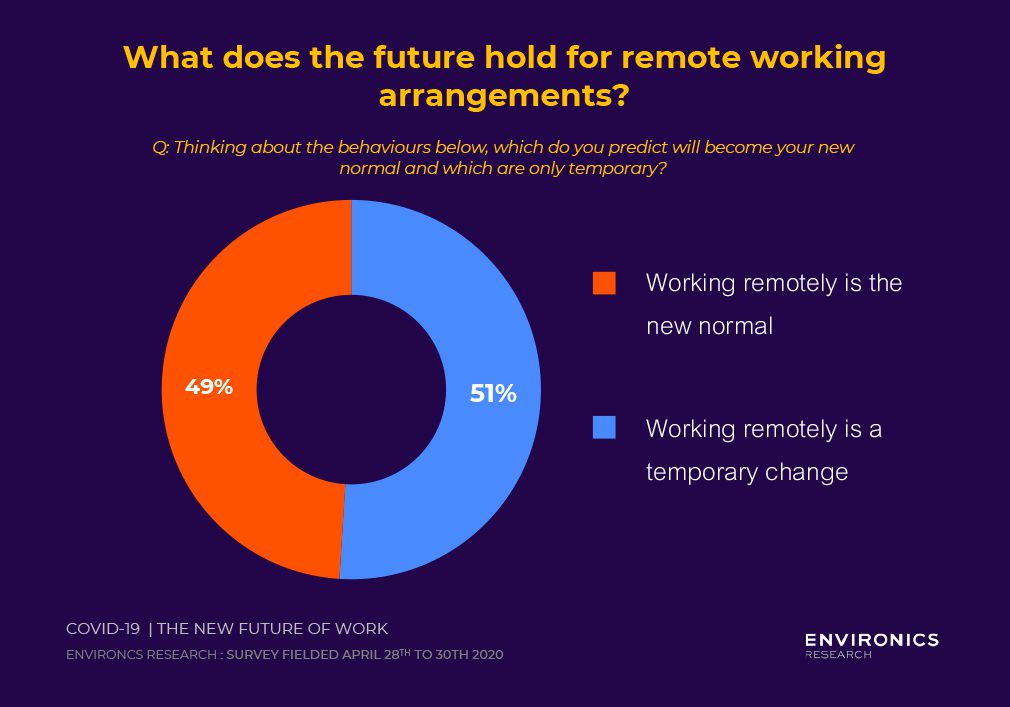Offering Flexible Work Arrangements Is No Longer Optional

Posted on: Wednesday Aug 19th 2020
Article by: Susan Seto
ARTICLE BY
SUSAN SETO
, MICHELE CUNNINGHAM
Long before COVID-19 sent people home from offices and schools, remote working was already a reality for a growing number of people and organizations. Efforts to control the pandemic have dramatically accelerated that already growing trend. Organizations that had not already done so needed to quickly develop the capacity to have team members work from home.
Now, as the initial shock of the pandemic subsides and leaders consider the months of physical distancing ahead, firms are considering just where and how their teams will be working for the foreseeable future.
It’s already clear that remote working experiences vary widely. People with young children at home, for example, are having a much different experience than others. But it’s not only family circumstances and commute times that shape employees’ reactions to working from home – it’s also their Social Values. Attitudes toward change, complexity, risk, health and social life in general will all affect how employees relate to the upheaval in their working lives.
WHO’S READY TO GO BACK TO THE OFFICE?
When we recently asked Canadians working from home to predict the future of work, they were evenly split: 49 percent expected that working remotely would become their new normal, while 51 percent believed it would be a temporary change. In other words, employers may face a workforce with divided expectations about how their work lives are about to change – or not.

When we recently asked Canadians working from home to predict the future of work, they were evenly split
One way in which employers can support their teams during the transition to whatever comes next is to review and revise workplace design and planning. The top priority is to create an environment in which employees not only are safe, but also
feel
safe. Precautionary measures to stop the spread of the virus (e.g., design, cleanliness) will be vital. So will clear, open communication about what the organization is doing to keep everyone safe. Employers will also need to think through which tasks, materials and functions are site-specific, which can be managed remotely, and how to allocate and design spaces – and work plans – accordingly.
In previous workspace research we’ve conducted, we’ve found that most workplace tasks fall into one of three categories: Focused, Collaborative or Social. Each of these types of work is being affected differently by the pandemic. Take Focused work, for example; some people are focusing like never before in the quiet of their homes; others are powerfully distracted by caregiving needs or physical environments. Employers should aim to consider all three types of function – including Social – as they establish new routines.
At Environics, we recently held our company’s summer party online. Organizers designed collaborative games to help people mix and have fun. Naturally, most people would have liked to enjoy food, drink and activities in person, but everyone was game to participate in the event, taking the opportunity to connect on a personal level at a strange time for everyone.
Our flexible organizational culture was an asset in this context, helping to create an atmosphere in which most people essentially said, “Why not? – let’s see how this goes.” Importantly, planning for the event took into account individual schedules, household arrangements and other particulars. A little planning and a little pragmatism made it work.
FOCUS ON FLEXIBILITY
Maintaining a healthy workplace culture and meeting the needs of a team with diverse requirements and expectations will necessitate adaptability, new ideas and a lot of creativity.
Flexible work policies were good for recruitment and retention before the pandemic; now, they’re even more critical. There’s no one-size-fits-all solution for every office environment and culture. Your team, your workspaces and the nature of your business will combine to create a unique set of imperatives.
To develop practices and approaches – and even workspaces and physical designs – that help your organization perform, it’s useful to understand the values segments within your workforce. Values will shape people’s reactions to the current crisis, their feelings about the future, their willingness to adapt to yet another “new normal”, and the expectations they have of their colleagues and employers. Targeted, values-based communications can help people with different values connect with their organization’s goals and culture.
For insight into your team’s values – and how that insight can help you craft solutions that support a positive and productive organizational culture during COVID-19 and beyond – get in touch with us by clicking below.





